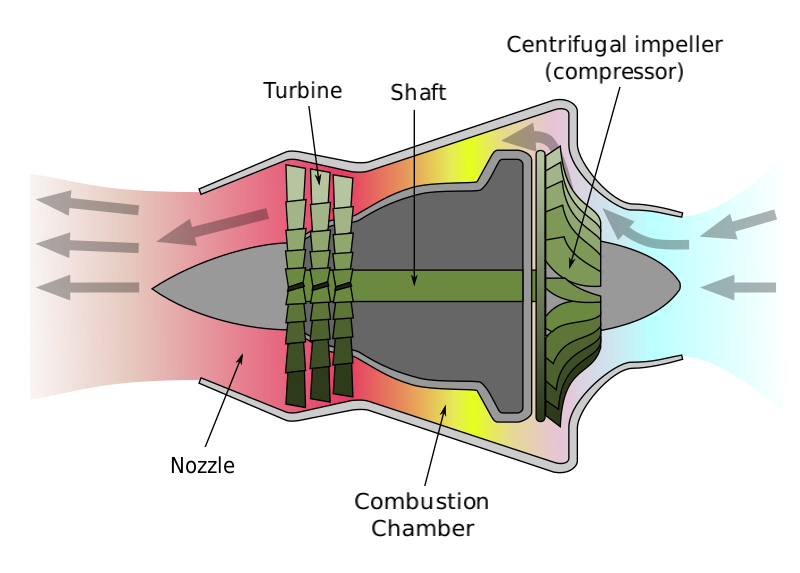3.1.3 Real Propulsion Systems
Course subject(s)
Module 3: Propulsion and Energy Carriers
Real Propulsion Systems
In the lecture, Dr. Gangoli Rao explained the components of a propulsion system and gave some examples of types of propulsion systems. Here, Joaquin will give some practical demonstrations of actual propulsion systems. There are three videos on this page, make sure to check them all out!
The example which Joaquin shows is an SR30 turbojet, a small gas turbine for education and research capable of producing a whopping 180 Newtons of thrust at 80.000 RPM (!). However, it has the same base components and functioning of any aircraft gas turbine:

Original design: Emoscopes, Vectorization: Tachymètre, CC BY 2.5
On the right, atmospheric air enters the turbine. Then, it is first compressed, then heated by burning fuel in a combustion chamber, and then work is extracted. First, a turbine extracts some work to drive the compressor, and then the remainder can be used to produce thrust in the nozzle.
Simple, right? But perhaps, we can make an even simpler propulsion system. Let’s find out!

Sustainable Aviation: The Route to Climate-Neutral Aviation by TU Delft OpenCourseWare is licensed under a Creative Commons Attribution-NonCommercial-ShareAlike 4.0 International License.
Based on a work at https://online-learning.tudelft.nl/courses/sustainable-aviation-the-route-to-climate-neutral-aviation/



